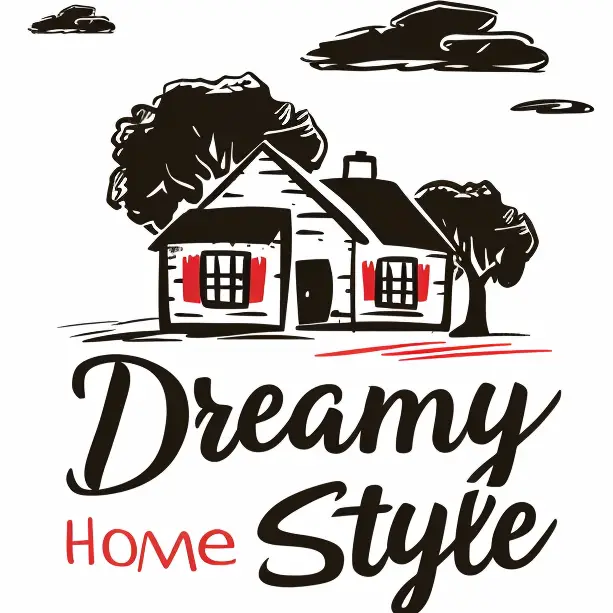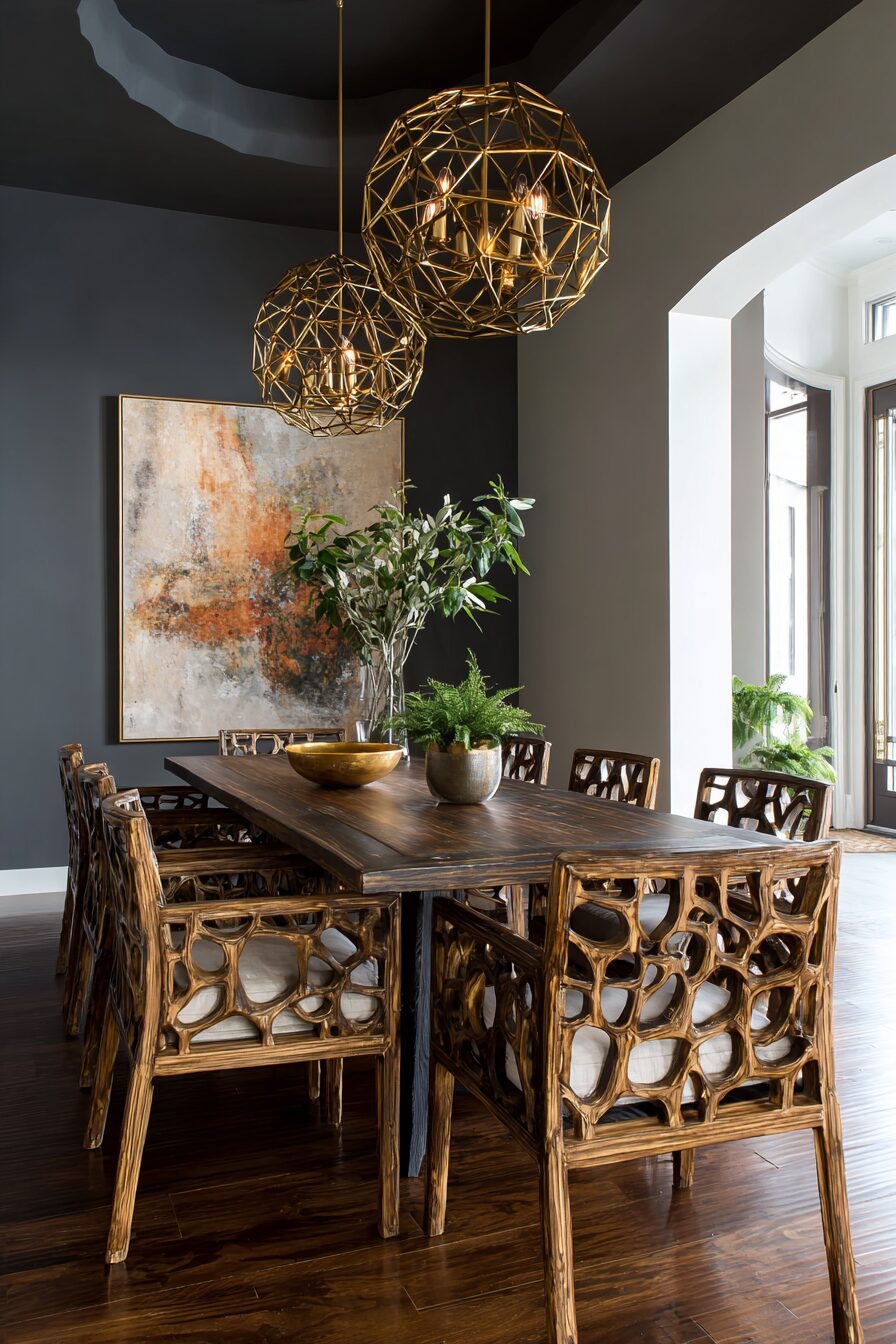Creating an eclectic dining room means throwing the rulebook out the window and embracing the beautiful chaos of mixing styles, periods, and personalities.
It’s about creating a space that tells your story through unexpected combinations and fearless design choices.
Vintage Velvet Meets Industrial Edge
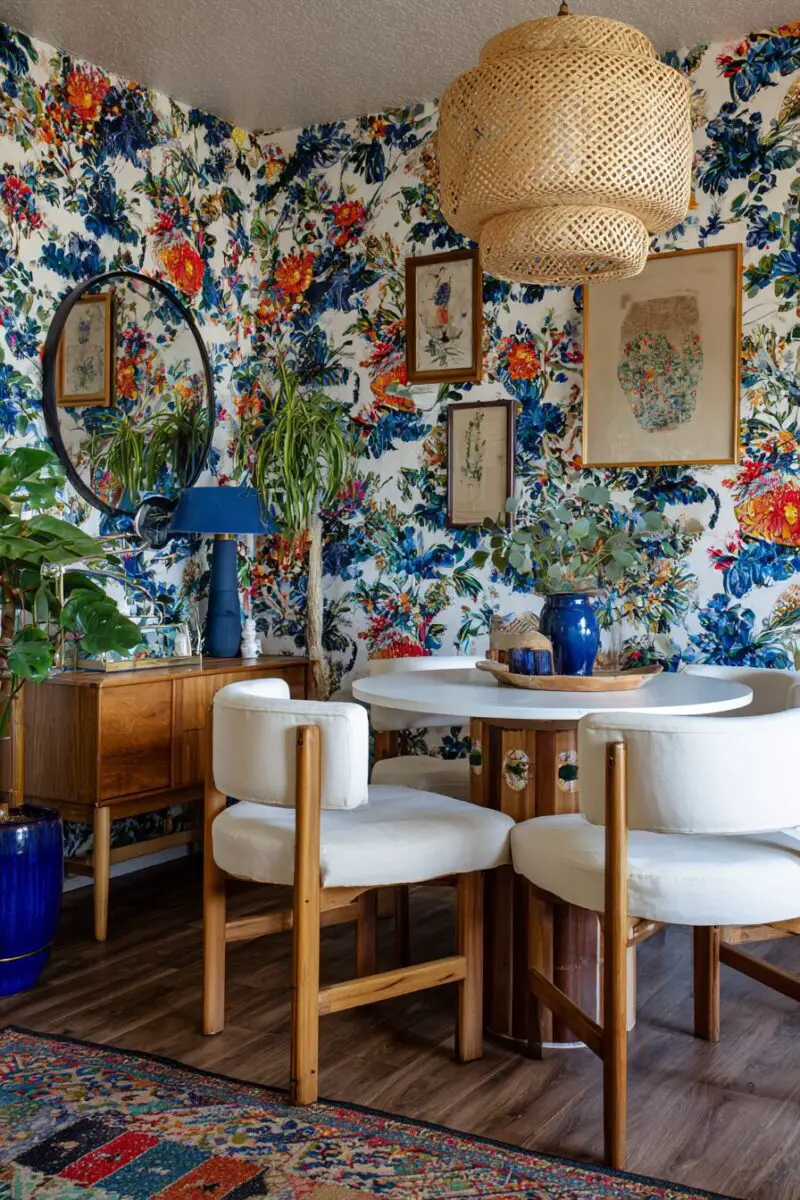
Picture walking into a dining room where a plush emerald velvet banquette sits confidently next to a raw steel dining table.
This striking combination creates an immediate visual tension that somehow works perfectly together.
You can achieve this look by sourcing a vintage velvet piece from an estate sale or antique shop, then pairing it with a table that features industrial elements like metal legs or a reclaimed wood top with steel accents.
The key is in the contrast – the softness of the velvet against the hardness of the metal creates a dynamic that keeps the eye engaged.
Add brass accents through lighting fixtures or decorative objects to bridge the gap between these two distinct styles.
A vintage brass chandelier hanging above the industrial table creates a third element that helps tie the room together.
You might also incorporate vintage glassware on open shelving made from reclaimed wood and metal brackets.
The beauty of this approach is that each piece maintains its individual character while contributing to a cohesive whole.
Don’t forget about textural elements like a jute rug or woven placemats that add another layer of interest.
The goal is to create a space that feels both refined and edgy, where dinner guests never quite know what beautiful surprise they’ll discover next.
Madison’s Current Obsessions
Which Dining Table Color Works Best with Your Dark Hardwood? 11+ Stunning IdeasMaximalist Wallpaper with Minimalist Furniture
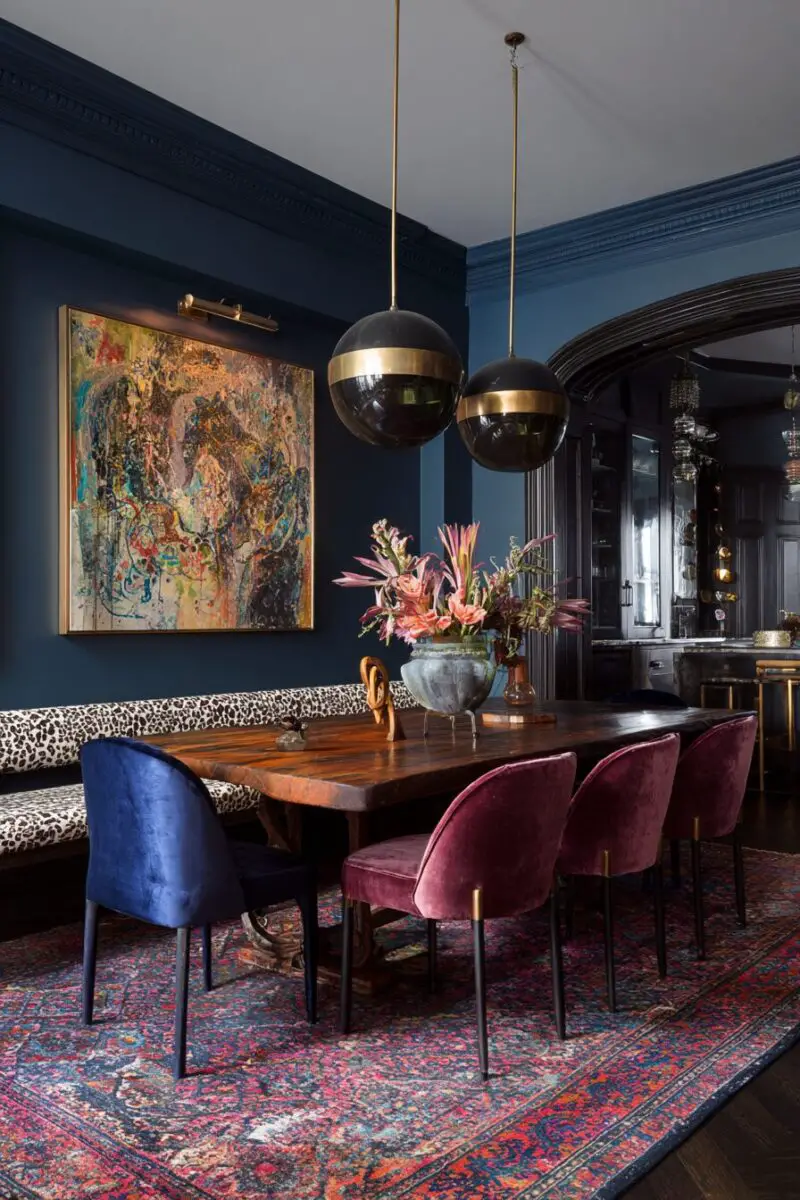
Imagine stepping into a dining room where bold, patterned wallpaper covers every inch of the walls, yet the furniture remains sleek and simple.
This approach creates a stunning backdrop that allows the wallpaper to be the star of the show.
You can choose wallpaper with large-scale florals, geometric patterns, or even vintage-inspired designs that speak to your personality.
The trick is selecting furniture with clean lines and neutral colors that won’t compete with the busy wall treatment.
A simple white or natural wood dining table paired with streamlined chairs in solid colors allows the wallpaper to take center stage.
Choose chairs in a color that appears in the wallpaper pattern to create subtle coordination without being too matchy-matchy.
Lighting becomes crucial in this setup – you want fixtures that complement the wallpaper’s style while maintaining the minimalist furniture aesthetic.
A modern pendant light or a simple chandelier in brass or black can work beautifully.
Keep tableware and accessories simple to maintain the balance between the busy walls and clean furniture lines.
White or clear glass dinnerware allows the wallpaper to remain the focal point during meals.
You might add one or two carefully chosen accessories, like a simple vase or a modern fruit bowl, but resist the urge to over-accessorize.
This approach proves that maximalist and minimalist elements can coexist beautifully when thoughtfully balanced.
Design Your Dream Room in Minutes!
🏡 Start Creating FREE →Madison’s Current Obsessions
10 Rustic Dining Rooms To Inspire Your HomeMismatched Chair Symphony
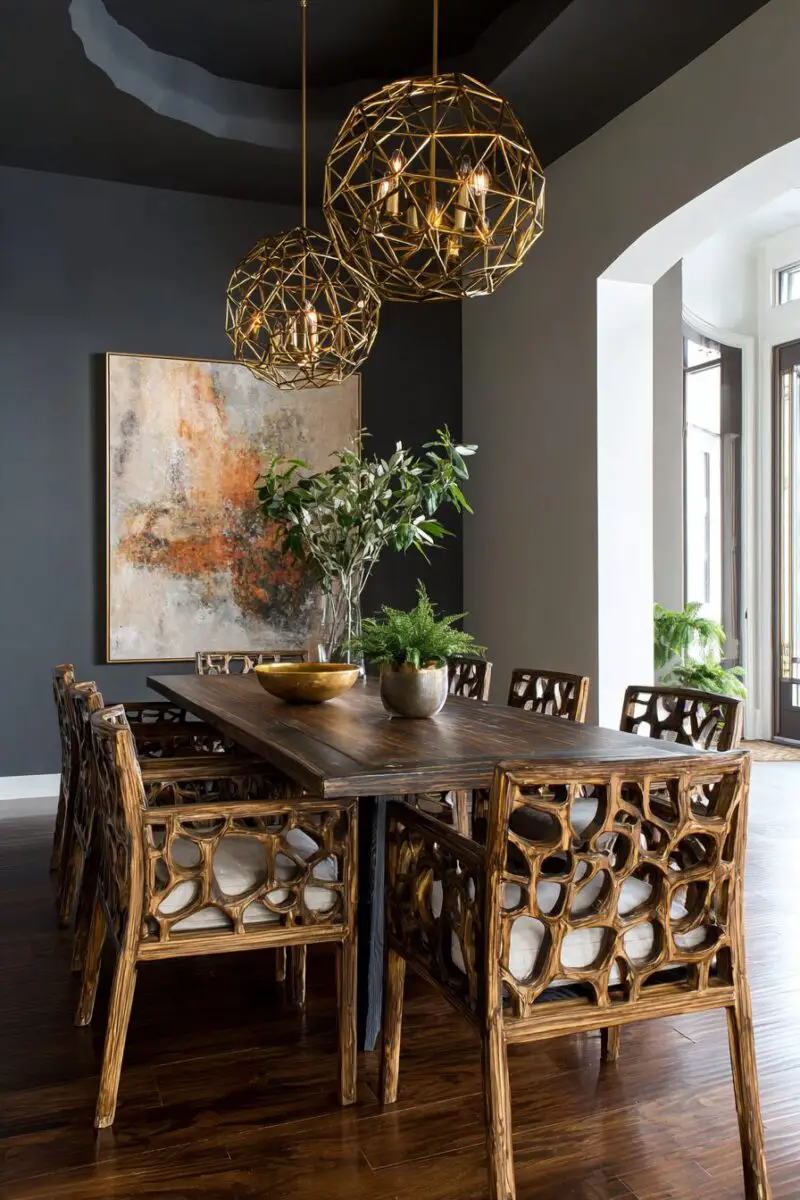
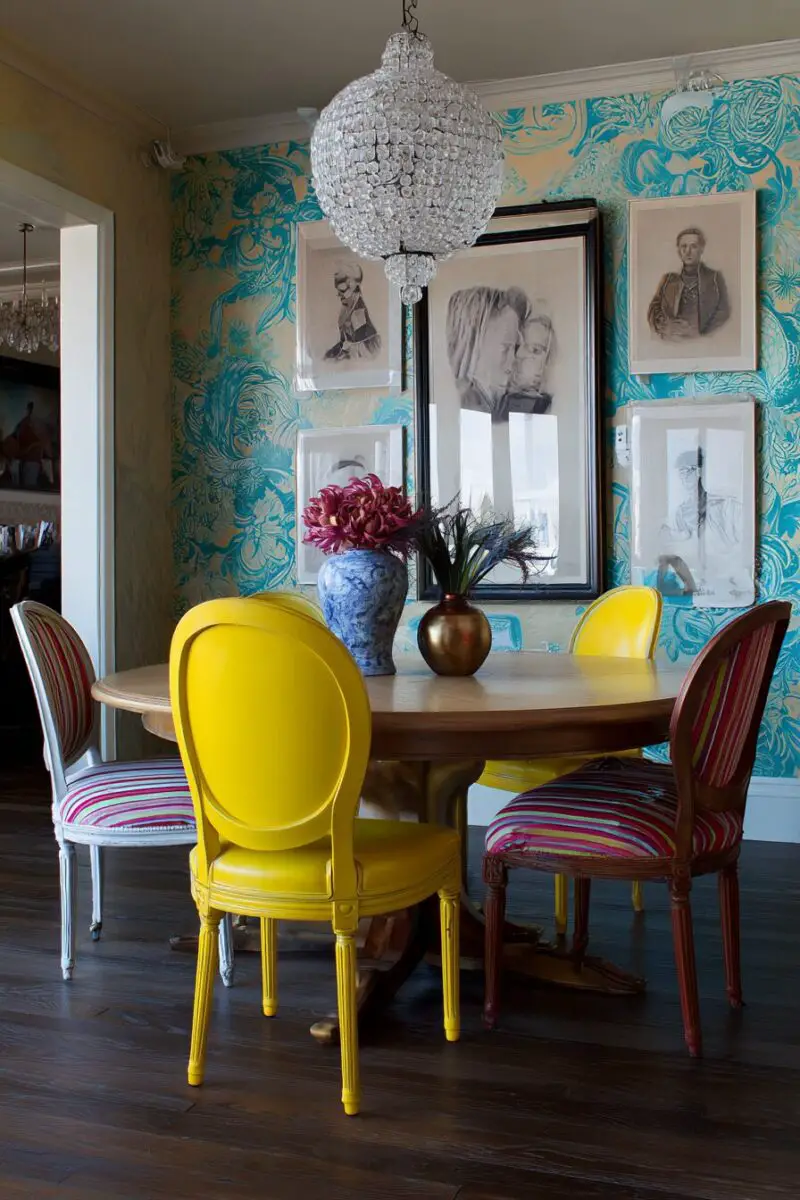
Nothing says eclectic quite like gathering completely different chairs around one dining table and making it look intentional.
This approach immediately signals that your dining room prioritizes personality over perfection.
You can mix chairs from different decades, styles, and even materials to create a collection that tells multiple stories.
Start with a unifying element like color – perhaps choosing chairs that all feature black frames or natural wood tones, even if their styles vary dramatically.
A mid-century modern chair might sit next to a Victorian-inspired piece, which could neighbor a contemporary acrylic chair.
The magic happens when these diverse pieces somehow harmonize through careful selection and placement.
You might choose to reupholster some pieces in coordinating fabrics while leaving others in their original materials.
This creates visual cohesion while maintaining the eclectic spirit.
Don’t be afraid to include one or two truly unique pieces, like a vintage barber chair or a repurposed church pew, as long as they function well for dining.
The goal is to create seating that sparks conversation and reflects your collecting adventures.
Each chair becomes a talking point, whether it’s a family heirloom, a flea market find, or a modern splurge.
Your guests will love discovering the story behind each seat and feeling like they’re part of something uniquely yours.
Madison’s Current Obsessions
13 SMALL Living Room/Dining Room Combo IdeasGlobal Gallery Wall Explosion
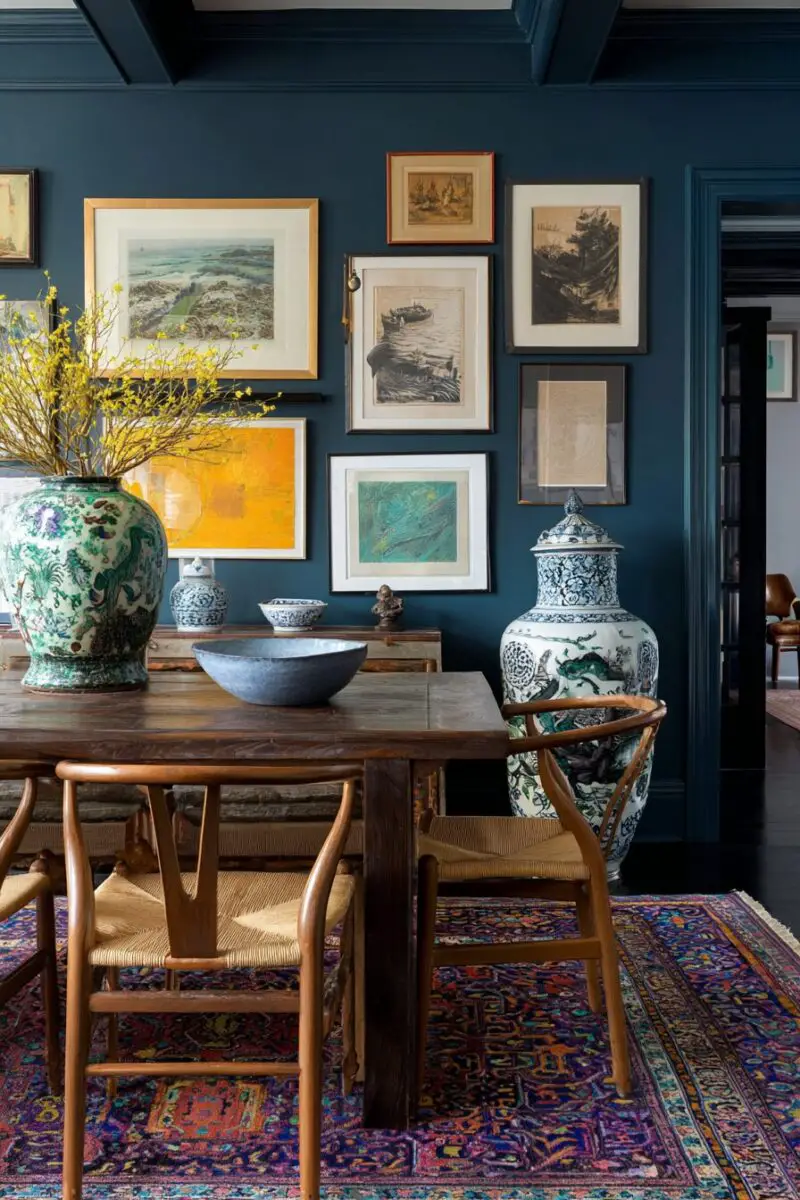
Transform one wall of your dining room into a curated explosion of art, artifacts, and memories collected from around the world.
This approach creates an instant conversation starter and showcases your travels, interests, and artistic eye.
You can mix framed photographs from your adventures with original artwork, vintage posters, small sculptural pieces, and even interesting textiles mounted in shadow boxes.
The key is creating a layout that feels intentional rather than haphazard, which requires some planning and patience.
Start by laying out all your pieces on the floor to experiment with arrangements before committing to nail holes.
Mix different frame styles and colors, but consider one unifying element like all black frames or all natural wood to provide some visual coherence.
Include pieces of varying sizes, from large statement prints to small intimate photographs, creating a rhythm across the wall.
Don’t forget about three-dimensional elements like small shelves holding collected objects, hanging plants, or even vintage plates.
The lighting for your gallery wall deserves special attention – consider picture lights or track lighting that can highlight different pieces.
You might dedicate one section to black and white photography, another to colorful prints, and a third to collected objects and textiles.
The beauty of this approach is that your gallery wall can evolve over time as you acquire new pieces or rearrange existing ones.
Your dining room becomes a reflection of your life experiences and artistic sensibilities, creating a deeply personal space for sharing meals.
Madison’s Current Obsessions
Your Dining Room Looks Dated Next To These Contemporary Masterpieces.Jewel Tones Meet Earthy Neutrals
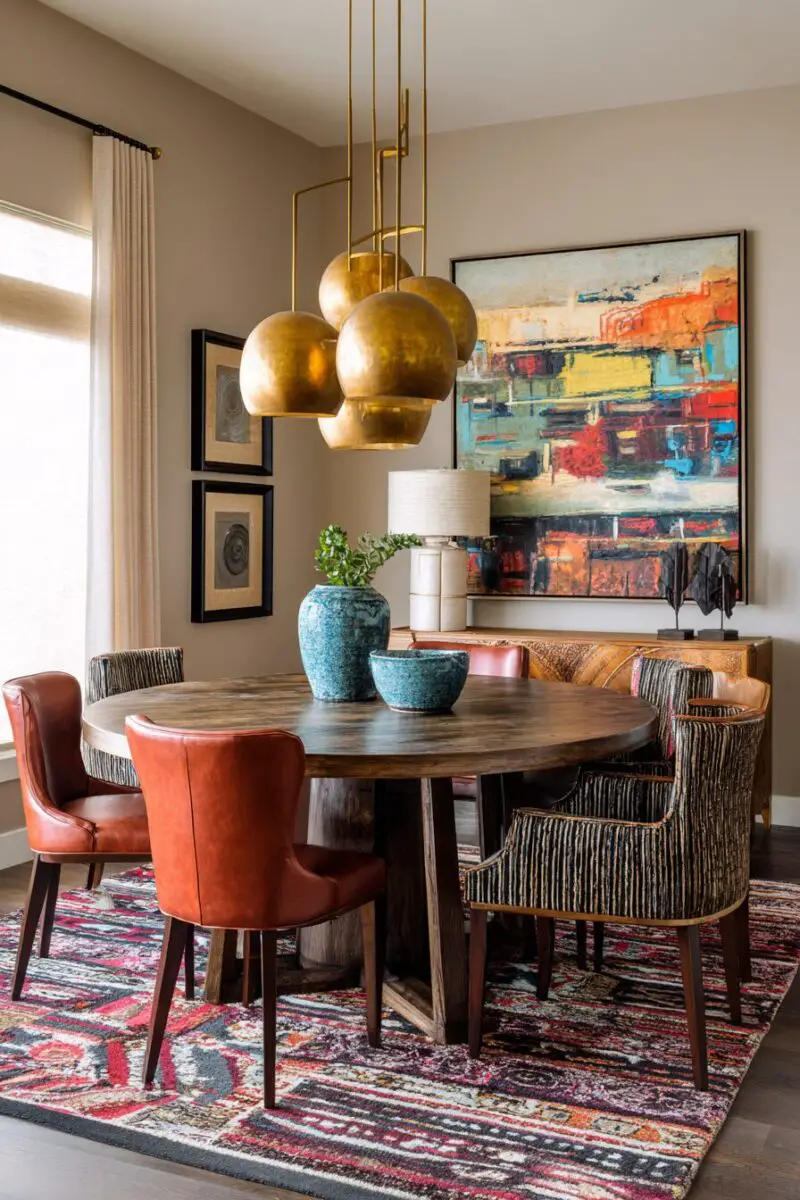
Create a dining room that pulses with rich, saturated colors while remaining grounded through natural, earthy elements.
This combination brings together the drama of deep emeralds, sapphire blues, and rich burgundies with the calming influence of warm woods, natural fibers, and stone textures.
You can introduce jewel tones through upholstery, artwork, or even a statement accent wall, while using natural materials for larger furniture pieces and foundational elements.
a dining table in rich walnut or oak paired with chairs upholstered in deep forest green velvet.
The contrast between the warm wood grain and the luxurious fabric creates an immediate sense of sophisticated comfort.
Add layers through textiles like a vintage Persian rug in deep blues and reds, which brings pattern and additional color while maintaining the rich color palette.
Natural elements like woven grass placemats, wooden serving bowls, and linen napkins in oatmeal or cream tones help balance the intensity of the jewel tones.
Lighting plays a crucial role in this scheme – warm brass fixtures or even black iron pieces can complement both the rich colors and natural materials.
Add live plants in natural fiber baskets or ceramic planters to bring in fresh green tones that bridge the gap between the deep jewel colors and earthy neutrals.
The goal is creating a space that feels both luxurious and approachable, where the rich colors energize while the natural elements provide visual rest.
This combination works particularly well in rooms with good natural light, as the interplay between the colors and materials shifts beautifully throughout the day.
Madison’s Current Obsessions
Stylish Living/Dining Room Combo Ideas You'll LoveMixed Metals and Materials Playground
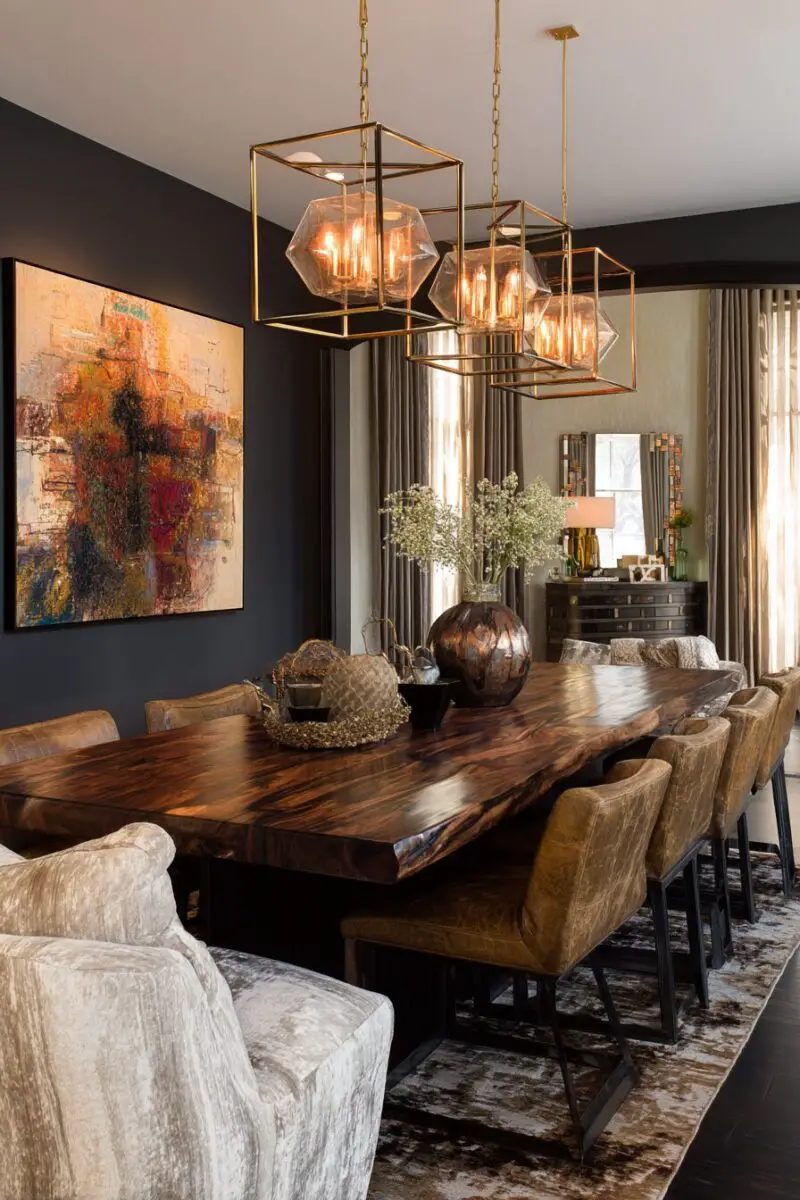
Embrace the beauty of combining different metals and materials throughout your dining room to create a space that’s rich in texture and visual interest.
This approach breaks the traditional design rule of sticking to one metal finish, instead celebrating the unique character each material brings.
You can mix warm brass with cool chrome, add copper accents alongside black iron, and incorporate both polished and matte finishes for varied reflective qualities.
Start with your lighting fixture as an anchor piece – perhaps a chandelier that already incorporates multiple metals or finishes.
Then layer in other metallic elements through cabinet hardware, picture frames, serving pieces, and decorative objects.
The key is achieving balance rather than equal distribution – you might choose one metal as your primary and use others as accents.
Don’t forget about non-metallic materials like glass, ceramic, wood, and stone, which can help bridge different metal finishes.
A glass-top table with a brass base might be surrounded by chairs with chrome legs and wooden seats, while copper pendant lights hang overhead.
Textural elements like woven baskets, ceramic vases, or stone serving boards add visual weight and help prevent the metal mixing from feeling too busy.
Put the undertones of your various metals – warm metals like brass and copper generally play well together, while cooler metals like chrome and stainless steel harmonize naturally.
However, the beauty of eclectic design is that unexpected combinations often create the most interesting results.
The goal is creating a space that feels collected over time rather than purchased all at once, where each piece contributes its own character to the overall composition.
Madison’s Current Obsessions
13 Fall Table Settings To Inspire Your Next DinnerPattern Paradise with Solid Anchors
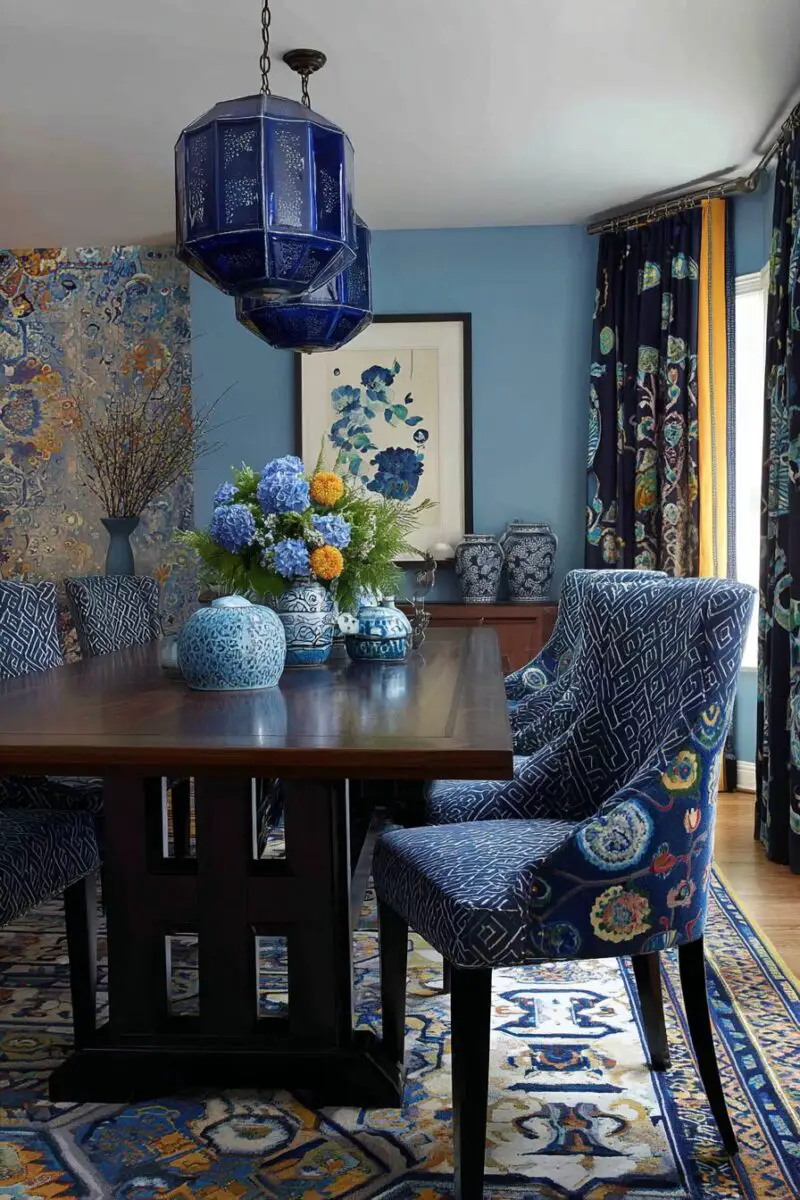
Create a dining room that celebrates pattern through strategic layering while using solid colors to provide visual breathing room.
This approach allows you to indulge your love of prints, textures, and designs without overwhelming the space.
You can mix patterns of different scales and styles – perhaps a large-scale floral wallpaper paired with smaller geometric patterns in textiles and a medium-scale stripe in window treatments.
The secret to successful pattern mixing lies in choosing a cohesive color palette that runs through all your patterns, even if the designs themselves are completely different.
Start with one pattern you absolutely love, then build around it by selecting other patterns that share at least one color with your anchor piece.
Solid-colored furniture and accessories provide crucial rest areas for the eye and prevent pattern overload.
A solid wood dining table, neutral upholstered chairs, or plain ceramic serving pieces help balance busy patterns.
Choose varying the types of patterns you use – mix organic shapes like florals with geometric designs, and combine different pattern scales for visual interest.
Stripes can work as a neutral pattern that bridges more complex designs, while small-scale polka dots or checks can add playfulness without competing with larger patterns.
Don’t forget about textural patterns created through materials like woven baskets, carved wood details, or textured ceramics.
These add pattern interest without competing with printed designs.
The goal is creating a space that feels layered and collected, where patterns complement rather than fight each other.
Your dining room becomes a celebration of design and color that energizes meal times while maintaining enough balance to feel comfortable and livable.
Madison’s Current Obsessions
These Luxe Dining Room Christmas Ideas Are Going ViralVintage Rugs Under Modern Tables
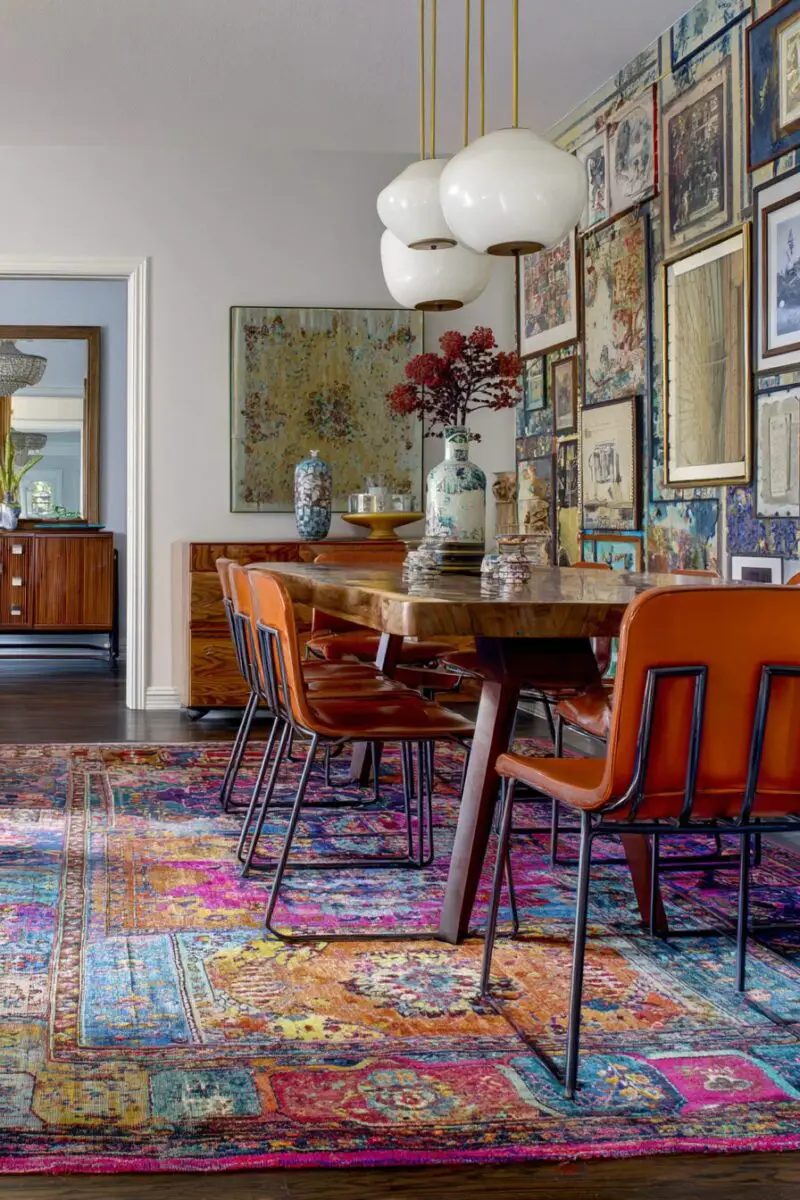
Transform your dining room by placing a gorgeous vintage or antique rug beneath a sleek, contemporary dining table for an unexpected combination that immediately elevates the space.
This pairing creates an intriguing dialogue between old and new that gives your dining room instant character and sophistication.
You can choose from Persian rugs with intricate patterns and rich colors, vintage Moroccan pieces with bold geometric designs, or even worn Turkish kilims with beautiful faded hues.
The key is selecting a rug that’s large enough to accommodate both the table and chairs, even when pulled out from the table.
A modern table with clean lines – whether it’s a glass top with metal legs, a solid wood slab, or a sleek lacquered surface – creates a beautiful contrast against the detailed patterns and aged patina of a vintage rug.
The juxtaposition highlights the best qualities of both pieces: the rug’s craftsmanship and history become more apparent against the table’s simplicity, while the table’s contemporary lines look even more striking against the traditional patterns below.
Don’t worry if the rug shows some wear or fading; these imperfections add to its character and charm.
The goal is creating a foundation that tells a story while providing a sophisticated base for your dining furniture.
This combination works particularly well with modern lighting fixtures overhead, creating a three-way conversation between traditional, contemporary, and transitional elements.
Your dining room becomes a space where different eras meet and complement each other beautifully.
Madison’s Current Obsessions
Everyone Who Loves Cozy Winters Is Trying These CenterpiecesTexture Overload Done Right
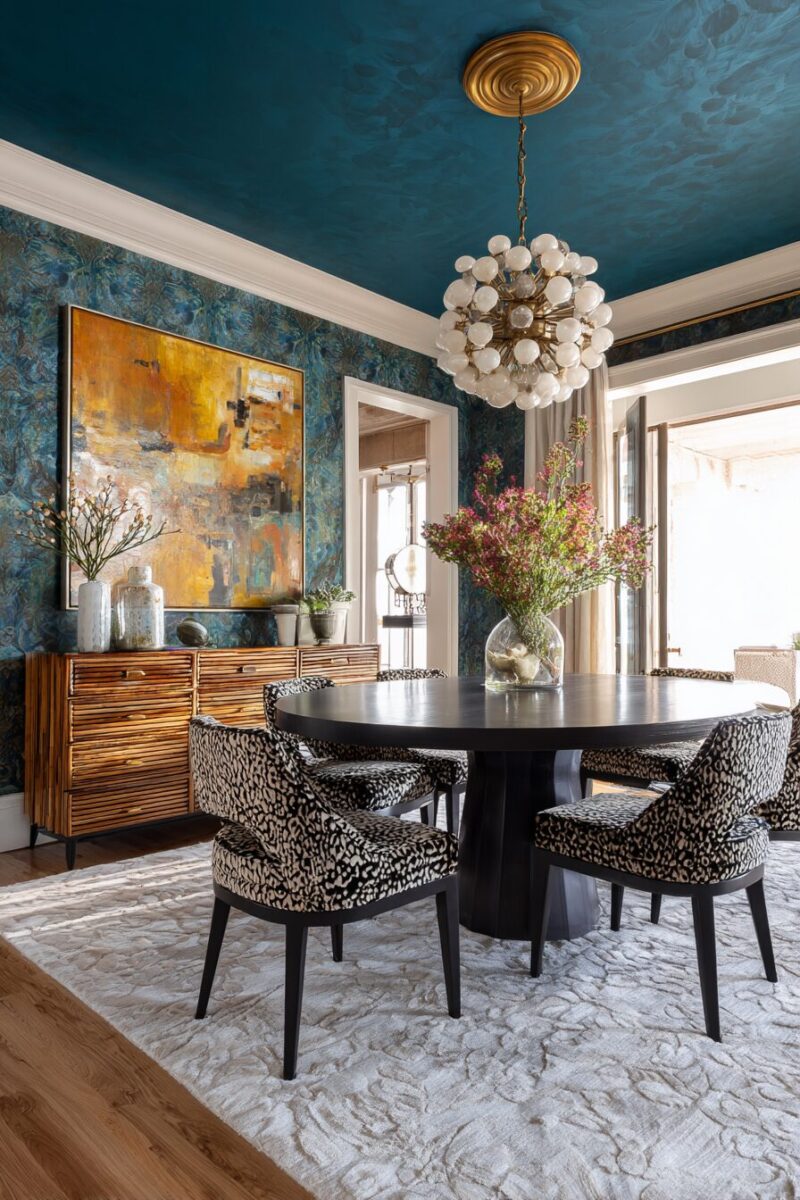
Create a dining room that celebrates tactile richness by layering multiple textures throughout the space for a sensory experience that invites touch and exploration.
This approach transforms your dining room into a space where every surface tells a different story through its material and finish.
You can combine rough textures like jute rugs and raw wood with smooth elements like polished marble and sleek metal, creating contrast that keeps the space visually engaging.
Add layers through textiles like linen table runners with interesting weaves, ceramic serving pieces with carved or textured surfaces, and woven baskets for storage or decoration.
Don’t overlook architectural elements like exposed brick walls, shiplap paneling, or even textured wallpaper that adds surface interest.
Lighting fixtures can contribute texture through materials like rattan, carved wood, or hammered metal.
The key is balancing rough and smooth textures so that neither dominates the space completely.
A smooth marble serving board on a rustic wooden table, or sleek metal candlesticks on a textured linen runner, creates pleasing contrasts.
Natural elements like plants in woven baskets, stone serving pieces, or even a small fountain add organic textures that soften harder materials.
The goal is creating a space where texture becomes as important as color or pattern in defining the room’s character.
Your guests will want to touch surfaces and explore the different materials, making the dining experience more engaging and memorable.
This textural richness creates warmth and depth that makes the space feel collected and lived-in rather than designed all at once.
Madison’s Current Obsessions
13 Stylish Built-In Sideboards For Your Dining RoomFormal Meets Casual Revolution
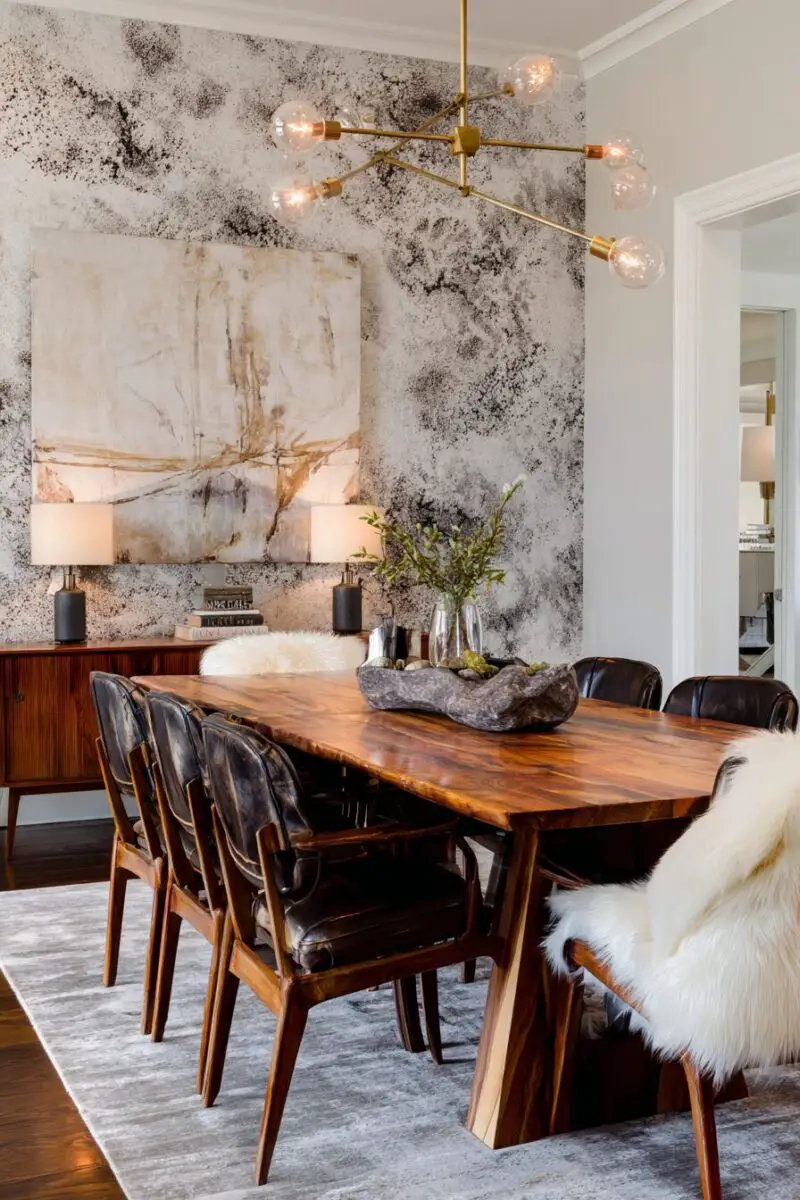
Break conventional dining room rules by mixing formal elements with casual pieces to create a space that’s both sophisticated and relaxed.
This approach allows you to use beautiful formal pieces you might otherwise save for special occasions while maintaining a comfortable, everyday atmosphere.
You can pair a grand crystal chandelier with a simple farmhouse table, or place elegant china in rustic open shelving made from reclaimed wood.
The contrast creates visual interest while making formal elements feel more approachable and lived-in.
A formal sideboard or buffet can display casual serving pieces alongside fine china, creating an interesting juxtaposition of styles.
Textiles offer another opportunity to blend formal and casual – perhaps elegant silk curtains paired with casual linen placemats, or a formal table runner with everyday ceramic dishes.
The key is maintaining balance so that neither the formal nor casual elements completely dominate the space.
Lighting can bridge these different styles effectively – a formal chandelier might be paired with casual table lamps, or modern pendant lights could hang above a traditional formal table.
Don’t be afraid to use your good dishes for everyday meals or to dress down formal furniture with casual accessories.
This approach makes your dining room more livable while still maintaining sophistication when needed.
The goal is creating a space that adapts to different occasions and moods, where Sunday morning pancakes feel as at home as holiday dinner parties.
Your dining room becomes more versatile and welcoming, encouraging regular use rather than being reserved for special occasions only.
Creating an eclectic dining room is about embracing the unexpected and trusting your instincts.
The most successful eclectic spaces tell a personal story through thoughtful combinations that reflect your travels, interests, and design sensibilities, making every meal a celebration of your unique style
